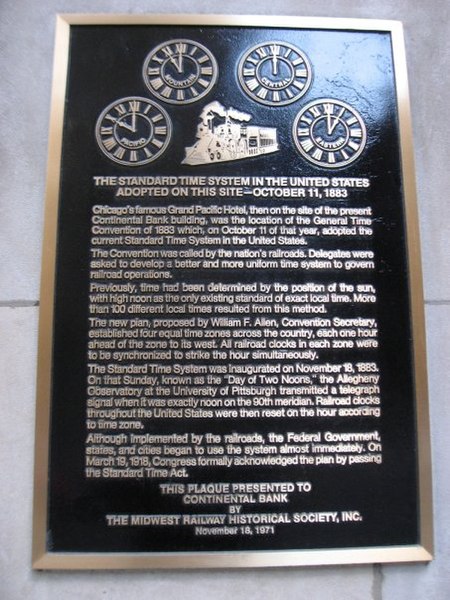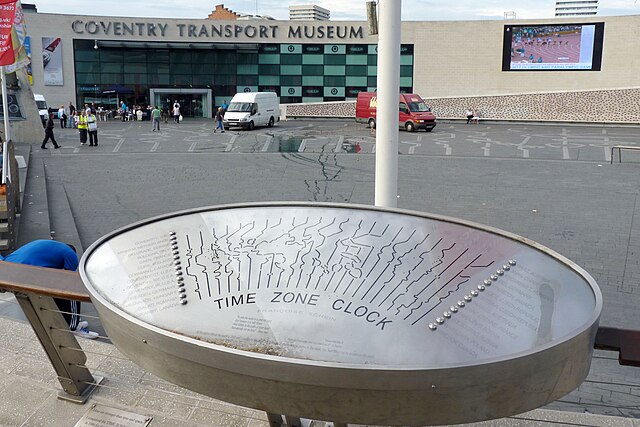Sir Sandford Fleming was a Scottish Canadian engineer and inventor. Born and raised in Scotland, he emigrated to colonial Canada at the age of 18. He promoted worldwide standard time zones, a prime meridian, and use of the 24-hour clock as key elements to communicating the accurate time, all of which influenced the creation of Coordinated Universal Time. He designed Canada's first postage stamp, produced a great deal of work in the fields of land surveying and map making, engineered much of the Intercolonial Railway and the first several hundred kilometers of the Canadian Pacific Railway, and was a founding member of the Royal Society of Canada and founder of the Canadian Institute.
Portrait of Sir Sandford Fleming by John Wycliffe Lowes Forster
Sir Sandford Fleming House (1866–1871), Brunswick St., Halifax, Nova Scotia
Fleming with his grandchildren in 1893
Sandford Fleming (in tallest hat) at the ceremony of the "last spike" being driven on the Canadian Pacific Railway
A time zone is an area which observes a uniform standard time for legal, commercial and social purposes. Time zones tend to follow the boundaries between countries and their subdivisions instead of strictly following longitude, because it is convenient for areas in frequent communication to keep the same time.
Plaque commemorating the Railway General Time Convention of 1883 in North America
The control panel of the Time Zone Clock in front of Coventry Transport Museum






